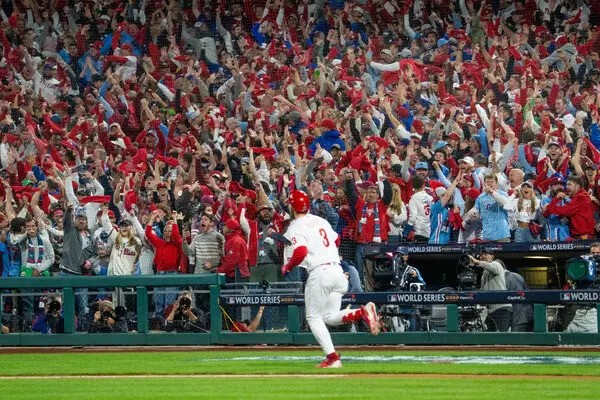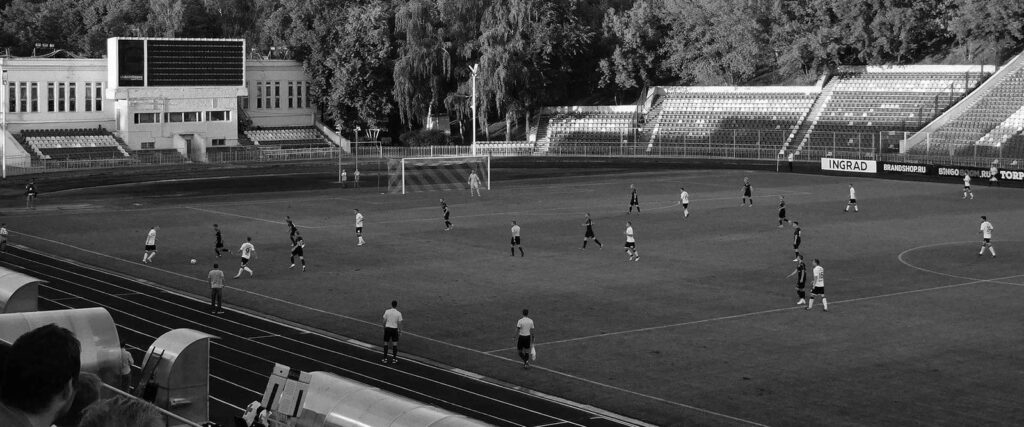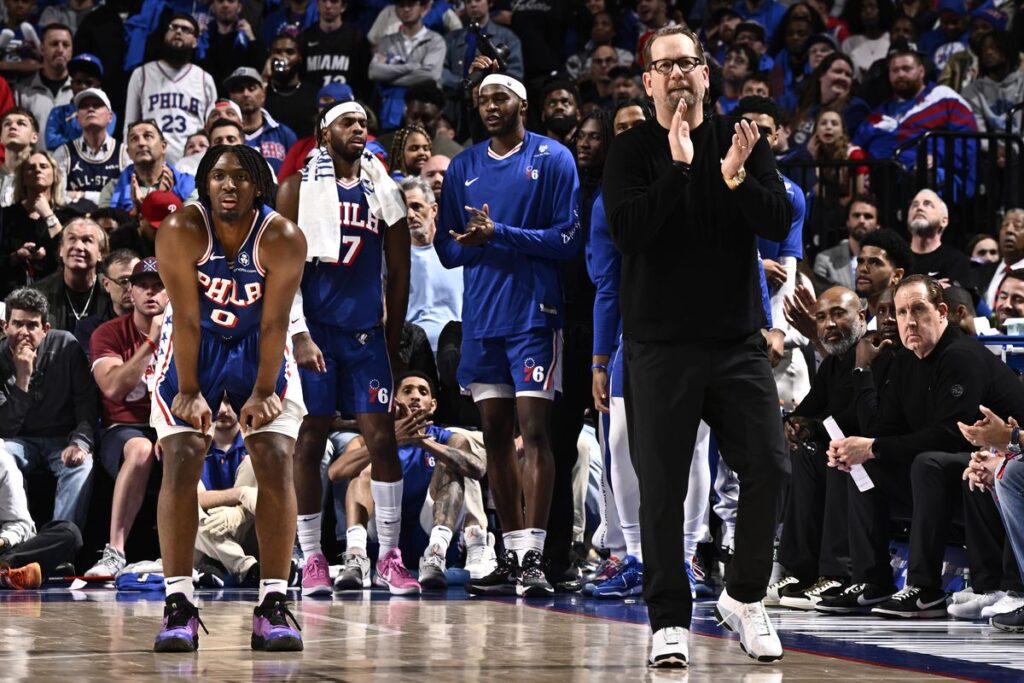76ers Vs Miami Heat Match Player Stats
The recent clash between the Philadelphia 76ers and the Miami Heat was very intense; they showed a lot of their skills, strategies, and strength. More than a regular season game, this one went deeper into the participation and depth in the rosters of the team as it was also presented as a possible battle line for playoff showdowns. This 76ers vs Miami Heat Match Player Stats breakdown will dig deep into key performances and strategies shaping this thrilling game.
What Was Philadelphia’s Game Strategy, and How Was It Executed?

The 76ers’ game strategy combined offensive diversity with a solid defensive approach, aiming to capitalize on their shooting abilities while minimizing Miami’s scoring chances.
They leaned on players like Maxey and Embiid for scoring while bringing in players like Kelly Oubre Jr. to create a versatile game style.
Analyzing the 76ers vs Miami Heat Match Player Stats, it becomes clear that Philadelphia’s strategy was centered around efficient shooting and maintaining a solid defensive stance.
Philadelphia’s Key Team Stats
- Field Goal Percentage: 46.7%
- Three-Point Shooting: 35.0%
- Rebounds: 41
- Assists: 28
The 76ers maintained a solid field goal percentage by focusing on high-percentage shots, especially during pivotal moments. Their assists reflected the team’s collaborative playstyle, moving the ball to create open shooting opportunities.
How Did The Miami Heat Plan to Counter the 76ers?
The mindset Miami came out with was defense, led by all-around player Jimmy Butler and Bam Adebayo, to limit Philadelphia from scoring through rebounding and converting turnovers into fast-breaks. Of course, the Heat also wanted to win it from beyond the arc; however, it was quite tough for them to get their shots to fall.
Miami’s Key Team Stats
- Field Goal Percentage: 41.5%
- Three-Point Shooting: 30.2%
- Rebounds: 51
- Assists: 24
Despite their rebound advantage, Miami’s shooting inefficiency significantly affected the outcome. Their higher rebounding count shows their physical playstyle, especially on the defensive boards, though it couldn’t offset the shooting disparity.
Read also: Andre Hakkak House – Inside the Luxurious $14 Million House in Coral Gables
Who Were the Standout Performers for Philadelphia?

Tyrese Maxey: The Game’s Top Scorer
Looking at the 76ers vs Miami Heat Match Player Stats,
- Points: 37 | FG%: 57.7 | 3P%: 35.7 | Assists: 11
But Tyrese Maxey was ridiculous; 37 points, 57.7% from the field.
Joel Embiid: Dominance in the Paint
- Points: 29 | FG%: 44.0 | 3P%: 50.0 | Rebounds: 4
Embiide was scoring in ones, and the paint presence was still there, even with tight defense on him tonight. His performance was crucial in setting the tone for the 76ers.
Kelly Oubre Jr.: Versatile Contributions
- Points: 18 | FG%: 57.1 | Rebounds: 8
Oubre’s work on rebounding and additional key defensive stops did also contribute to a more all-around effort by Philadelphia. His versatile role allowed the team to adapt quickly during fast-paced segments.
What Was Miami Heat’s Approach with Key Players?
Jimmy Butler: Consistent Leadership
- Points: 20 | FG%: 41.2 | 3P%: 25.0 | Assists: 5
From the 76ers vs Miami Heat Match Player Stats, Jimmy Butler showed leadership, but his shooting efficiency was a factor in Miami’s struggle.
While Butler’s shooting wasn’t at peak efficiency, his leadership on the court allowed Miami to stay competitive. He delivered in high-stakes moments, balancing scoring with playmaking.
Terry Rozier: Three-Point Threat
- Points: 22 | FG%: 35.0 | 3P%: 46.2
Rozier significantly impacted from beyond the arc, hitting six three-pointers that kept Miami close to Philadelphia. His scoring was crucial in maintaining the Heat’s offensive presence.
Bam Adebayo: Dominating the Boards
- Points: 14 | FG%: 40.0 | Rebounds: 11
Adebayo led Miami’s rebounding efforts, contributing both on offense and defense. His ability to contest shots and pull down rebounds kept the 76ers from running away with the score.
Read also: Euro pare-brise + verdun haudainville – Ensuring Your Safety
Is Shooting Efficiency the Deciding Factor?

The key comparison in the 76ers vs Miami Heat Match Player Stats is evident through significant shooting efficiency disparity which ended up deciding the game. On closer look at both teams’ shooting efficiencies, some significant disparities are found that have definitely influenced the game’s outcome.
In that regard, Philadelphia’s players did much better on field goal attempts and attempts from behind the three-point line. That fact demonstrates they made very focused shot selections and executed with the sharpness they possessed.
- 76ers’ FG%: 46.7%, 3P%: 35.0%
- Heat’s FG%: 41.5%, 3P%: 30.2%
Higher shot-making efficiency by the 76ers forced them to hold onto crucial moments in the game. That underlines accuracy-the most important element of close games.
How Did the Teams Compare in Rebounding?
The two teams fought hard for the rebounds, but Miami’s team statistics on that front were better. Controlling a higher defensive rebounding percentage, they didn’t let Philadelphia score more often on second-chance opportunities. Still, with this fact in mind, Philadelphia was still able to slightly outmatch Miami as a much more efficient scoring team.
- Total Rebounds: Heat 51, 76ers 41
- Offensive Rebounds: Heat 16, 76ers 8
Looking at the 76ers vs Miami Heat Match Player Stats, Miami had the upper hand in rebounding, but Philadelphia’s shooting made the difference.
Read also: among us:xanc9oskqog= sus
Are Turnovers Affecting Game Flow?

Turnovers played a significant role, impacting the rhythm and momentum for both teams. Philadelphia managed to exploit Miami’s turnovers effectively, converting them into valuable points—this ability to capitalize on errors added to the 76ers’ advantage.
- 76ers’ Turnovers: 11
- Heat’s Turnovers: 15
This turnover differential underscored the 76ers’ ability to manage possessions effectively while putting pressure on Miami to minimize mistakes.
What Was the Impact of Each Team’s Bench Players?
Philadelphia 76ers’ Bench Performance
Paul Reed and Cameron Payne were good bench reinforcements. This is where depth really showed with the ability to keep scoring and defense intensity against the bench, too.
- Paul Reed: 5 Points, 4 Rebounds
- Cameron Payne: 6 Points, 2 Assists
This support from the bench allowed the 76ers to sustain their energy and intensity, especially during pivotal game stretches.
Miami Heat’s Bench Impact
Miami’s bench, led by veterans like Kevin Love and emerging players like Haywood Highsmith, provided a mix of scoring, rebounding, and defensive efforts. Kevin Love’s rebounding strength was particularly impactful.
- Kevin Love: 11 Points, 16 Rebounds
- Haywood Highsmith: 12 Points, 9 Rebounds
Despite solid bench performances, Miami couldn’t translate these contributions into a win, highlighting the importance of overall shooting efficiency.
Read also: Alerta de Bandera Roja (Clima Propicio para Incendios)
When Did Critical Moments and Game-Changing Plays Occur?

Now, the 76ers vs Miami Heat Match player stats really showed that in a game of shifting momentum, this match would take players many quick changes in wind direction before it settles on one side.
Many of the critical plays have emerged as a result of strategic shifts in judgment that determine whether one wins or loses. Some of the most pivotal moments and game-changing plays that defined this matchup are.
Maxey’s Three-Point Barrage in the Third Quarter
In the third quarter, Tyrese Maxey’s three-ball spree turned the tide for the 76ers. Building momentum, Miami did everything possible to take a lead and dominate with it. Maxey’s back-to-back three-ball shots created a sudden scoring that looked to spoil Miami’s rhythm.
Shots from deep extended Philadelphia’s lead, which made the team feel revitalized while making Miami rethink the defensive strategy. The accuracy of deep shooting from Tyrese Maxey halted the Heat’s attempt to bridge the gap.
Defensive Stops by Joel Embiid in the Paint
Joel Embiid’s defense helped the 76ers win in the latter half of the game. Miami was forcing their way to easy points inside the paint as blocks and challenged shots awoke him to near-miss kills.
Forcing Miami into those tough, contested shots under pressure deprived them of possessions to exploit those lay-offs with the game swinging back at Philadelphia’s end, and his defense only was crucially protecting the lead of 76ers.
Kelly Oubre Jr.’s Versatile Impact in Transition
As it was in previous games against Philly, several sequences would turn in the 76ers’ favor on late-game defensive scramble plays, hustle transition opportunities by Oubre, who following a steal off Miami’s Caleb Martin with 5:14 remaining in the fourth quarter made a layup, in addition to his quickly shifting from defense to offense and the Heat’s mistakes forcing pressure on the Heat and producing crucial points in transition for the 76ers.
Jimmy Butler’s Response in the Fourth Quarter
Jimmy Butler tried to get his teammates into the game with his drives inside and his fouls. The Heat was very close at the end partly because of Butler’s scoring, but especially those furious drives that were going to the line to collect his free throws.
Butler’s tenacity gave the game some momentum for Miami as it squeezed the difference closer, but it was not enough to drive it forward a step further; this inconsistency would also cripple Butler’s effectiveness.
Final Defensive Stand by the 76ers
In the final two minutes, the 76ers tightened their defense as the game drew to a close, forcing numerous turnovers and denying Miami any clear-shot chances, winning a fitting defensive close. Philadelphia’s timely coordinated defense stand on final possessions sealed the game, which let them preserve their lead and win the game.
How Did Players and Coaches React Post-Game?
After the game, both teams offered insights into their performances. The 76ers emphasized team chemistry and adaptability, noting that their balanced playstyle was essential for the win.
Miami’s players and coaching staff highlighted areas for improvement, particularly shooting consistency and turnover management, showing a commitment to adjusting their strategies for upcoming games.
Read also: Wallpaper:dazevovfbdw= black background
76ers vs. Heat: Key Takeaways for Fans and Future Matchups

Philadelphia 76ers win against Miami In a nutshell, the win of Philadelphia 76ers against Miami Heat shows the biggest strengths and weaknesses for each of the teams. Here is a quick summary for each team.
Philadelphia 76ers: Building on Strengths
- Tyrese Maxey’s Role: The breakout scoring game makes Tyrese Maxey a primary and reliable scorer for him besides Joel Embiid.
- Balanced Offense: Shooting and the Philadelphia 76ers’ ball movement efficiency have shown that they could have excellent balance in their ball movement, especially to mediocre challenges.
- Defensive Foundation: A defensive foundation, with Embiid’s shot-blocking as well as Oubre’s hustle, would help go a long way in enabling the 76ers to respond to opponents as well as launch fast breaks.
- Bench Depth: Devout bench performances are money in the bank, and one of the big reasons the 76ers could take this for longer games.
Miami Heat: Areas for Improvement
- Shooting Consistency: Miami struggled with shooting efficiency, especially from three-point range. Focusing on shot selection could improve scoring outcomes.
- Leadership from Butler and Adebayo: Butler and Adebayo remain pivotal, but the team must support them with consistent role players to maximize their impact.
- Turnover Reduction: High turnovers limited Miami’s offensive momentum. Reducing mistakes will help control the game pace and create scoring opportunities.
- Strengthening the Bench: Miami’s bench, led by Kevin Love, shows promise, but developing more reliable scoring options will be crucial in close games.
Conference Impact on
- 76ers’ Confidence Boost: This win positions Philadelphia as a strong Eastern Conference contender, capable of handling offensive and defensive challenges.
- Miami’s Adaptation Needs: Addressing shooting and turnover issues is critical for Miami to stay competitive in the playoff race.
The 76ers vs Miami Heat Match Player Stats is a growth point for both teams, with the 76ers showcasing balance and Miami identifying key areas to sharpen, setting the stage for a competitive season.
FAQs:
1. How Did Miami Heat’s Performance Impact Their Playoff Hopes?
Miami presented strong rebounding and leadership on the side of Jimmy Butler, yet shooting and turnovers stand out as challenge areas if continued success is to play out in the playoffs.
2. Did The Heat’s Bench Contribute Enough In This Game?
The bench, which added Kevin Love and Haywood Highsmith to the usual suspects, got the job done for Miami, but Heat bench depth was not deep enough to overcome its shooting and turnover problems.
3. How Did Turnovers Affect The Heat’s Chances Of Winning?
Turnovers were largely responsible for the Heat’s losing the game since they gave the 76ers the fast breaks; it also meant limited scoring chances throughout the remainder of the game, especially in the second half.
Final Takeaways: Why This Matchup Matters
The 76ers vs Miami Heat Match Player Stats would not only be about the moment of brilliance but also how that pivotal moment and the strategies by the team played out in the final score. This was a great battle between the Philadelphia 76ers and the Miami Heat, filled with impressive skill, strategy, and outstanding performances. While the 76ers shot accurately and played all-around well, it is the great rebounding and hustle put up by the Heat that point to their determination.
Read more:


